Ergonomics
The aspects of health, safety and comfort form the core of ISRI seat development. Biological functions and needs of the human body as well as a close examination of the work situation guide our seat design. Our experts work closely together in the functional areas of development, design and ergonomics in order to combine all requirements for an ergonomic seat.
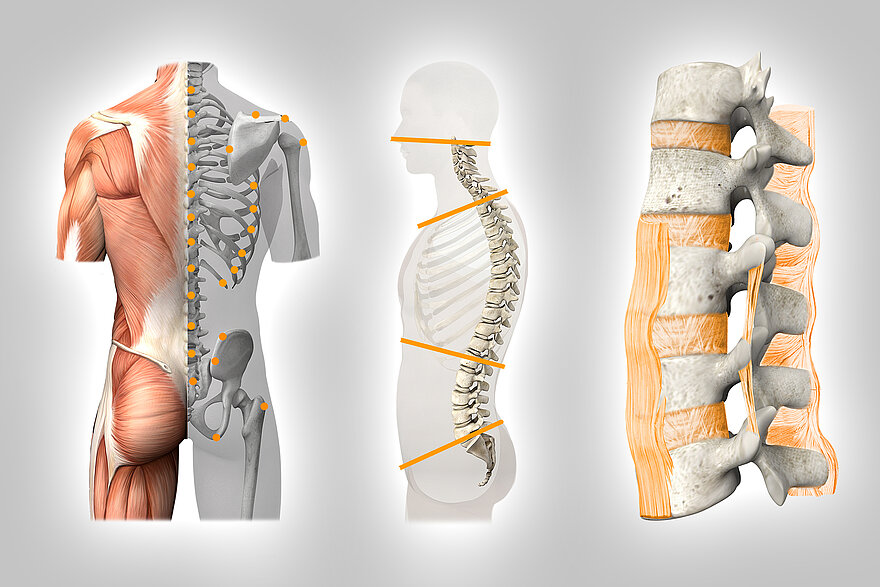
Focused on people
Seat development for humans.
To meet the requirements of an ergonomically designed seat, it is important to understand the human body with its biological functions and needs.
It is also necessary to take a close look at the work situation:
In what way is the seat used?
How many hours a day is it used?
What conditions must be met to improve working conditions?
These are the tasks we set ourselves in order to ensure that the driver can adjust the seat optimally and so improve health and well-being.
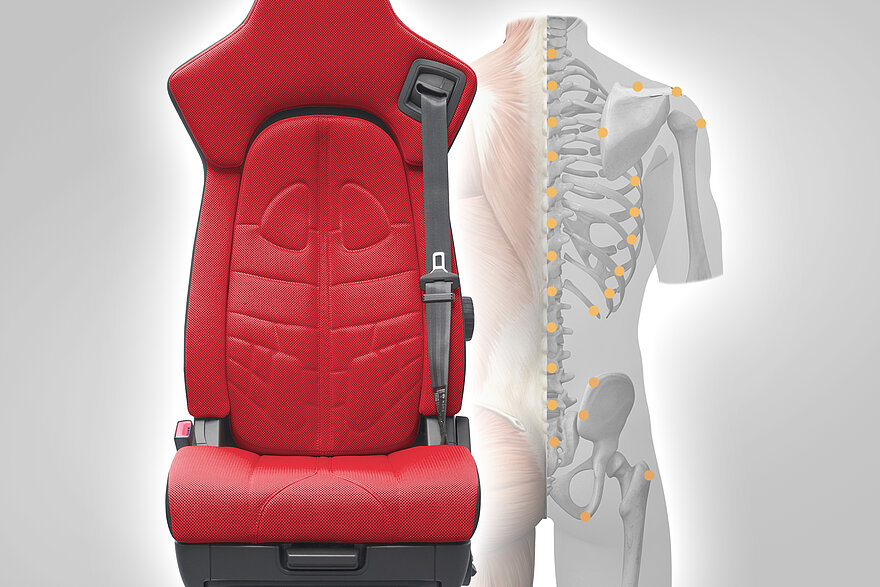
Dynamic Seating
Why is movement important and how can we introduce more movement into the driver’s working day?
The body needs movement to help activate its metabolism and circulation to remain attentive and reactive. The spine and its intervertebral discs need movement to ensure the exchange of nutrients, which helps keeping the spine supple, flexible and able to absorb vertical shocks. In the long-term, an unequal distribution strain along the spine, resulting from an unhealthy seating position, is an additional risk factor related to lack of movement.
This is why, as part of the project “Movement in the Workplace,” we are continually researching new seat concepts that stimulate active driver movement and stop drivers from remaining in a static posture while they are seated.
How to Sit Correctly?
A good sitting posture is essential to stay attentive to both the controls and traffic. However, it can also lead to complaints due to a permanently crooked or constant sitting posture. Consciously changing the sitting posture even while driving by adjusting the backrest or seat cushion tilt is particularly important.
It is therefore important to become familiar with the correct sitting posture.
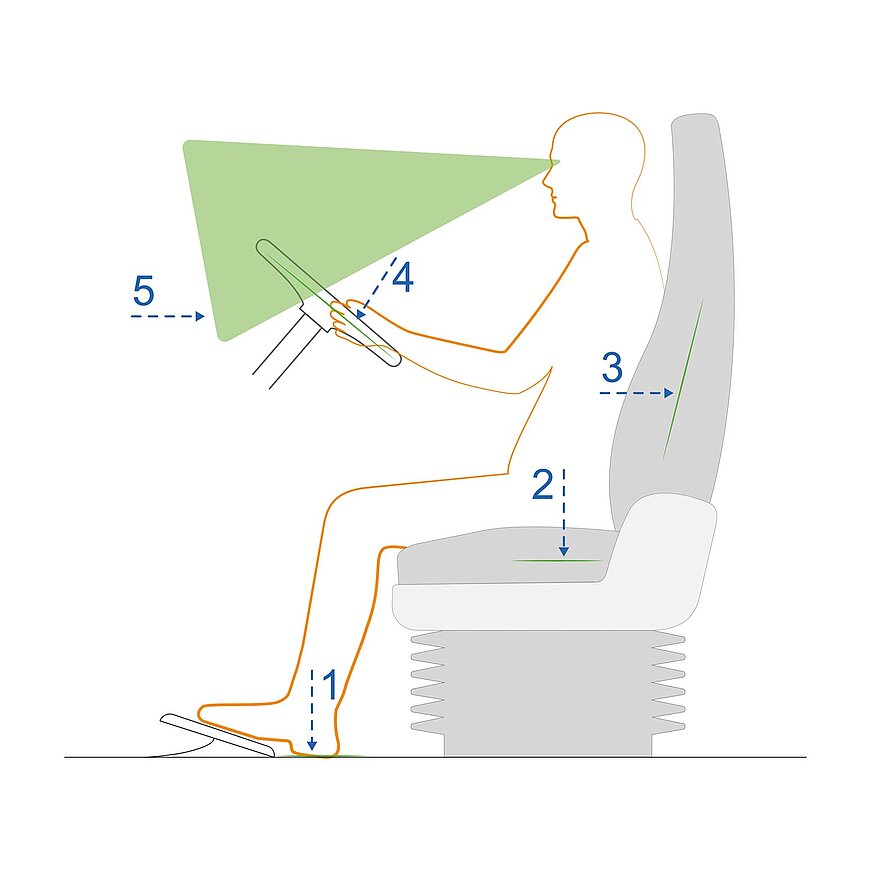
DRIVING SITTING POSTURE
- 1. feet on the pedal
- 2. buttocks on seat
- 3. back on backrest
- 4. hands on steering wheel
- 5. view out of windshield
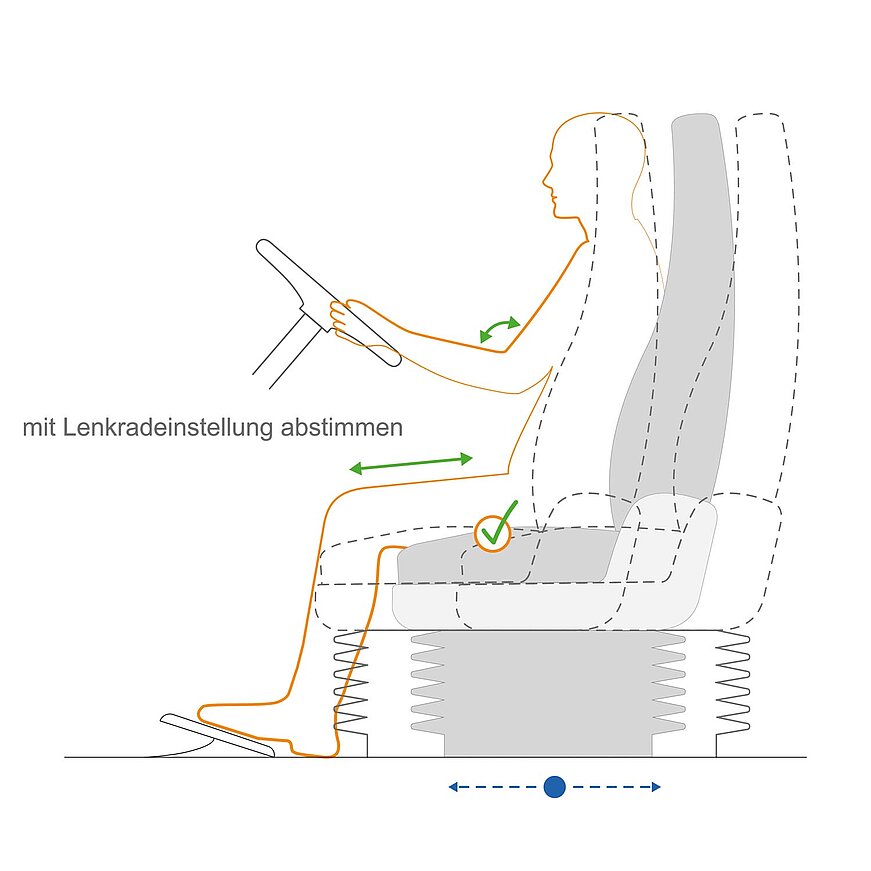
Horizontal adjustment
Adjust individually according to:
- arm and leg length
- rechability of pedals, steering wheel and instruments
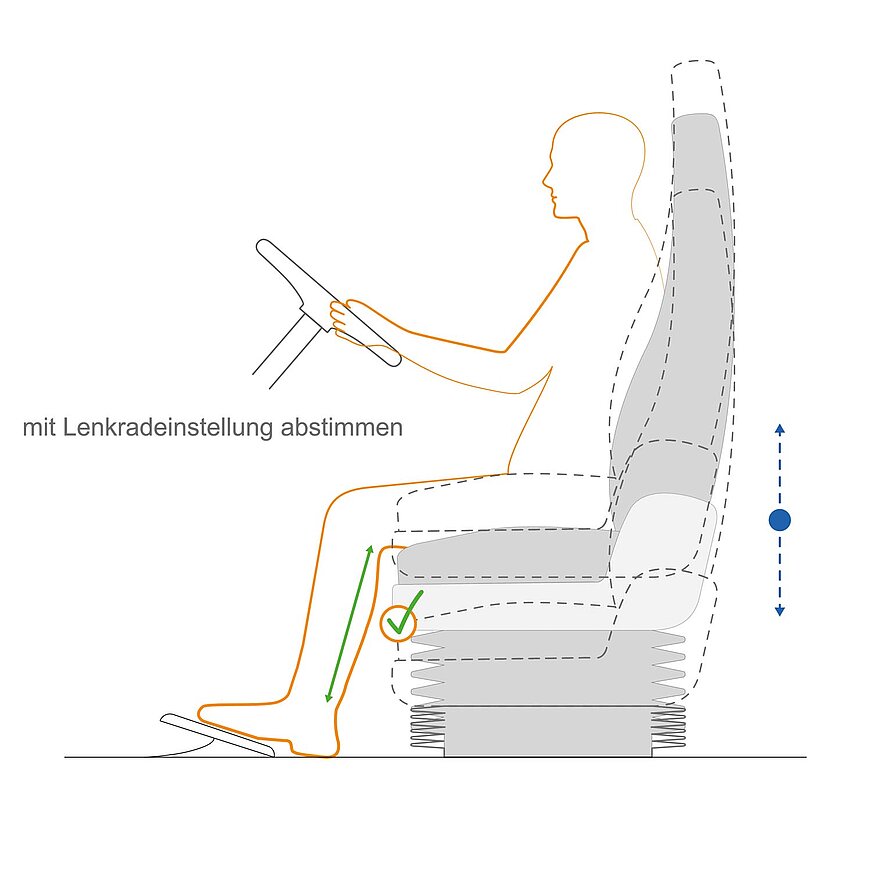
Height adjustment
- adjust individually to lower leg length so that pedals can be passed through all the way without force
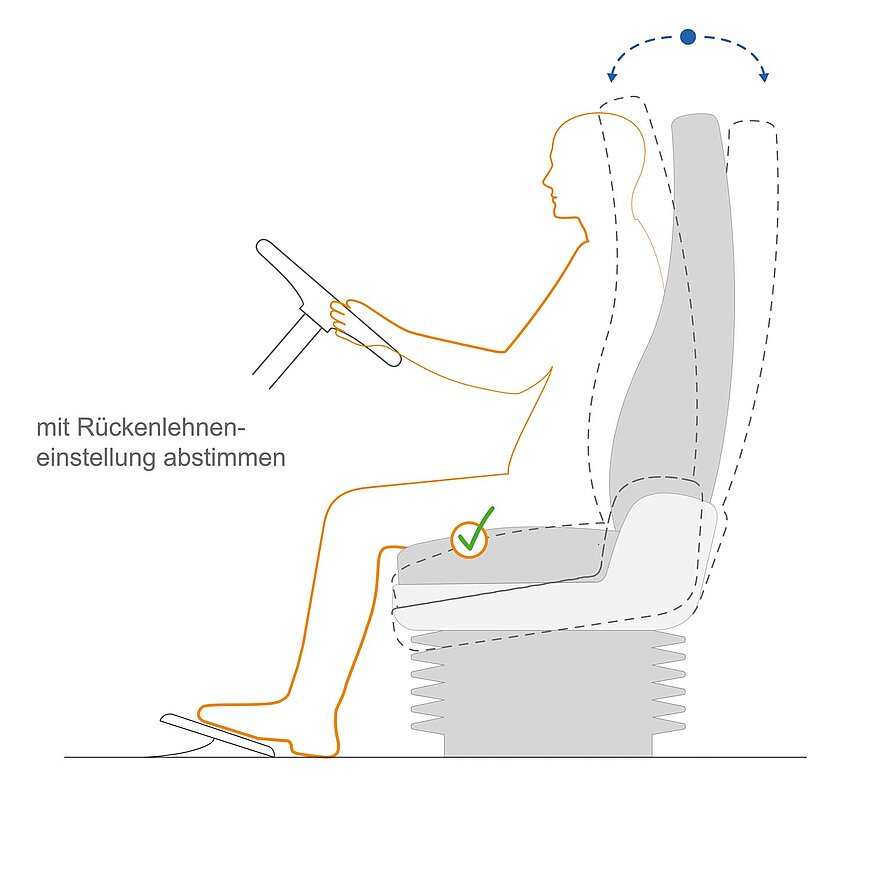
TILT ADJUSTMENT
- adjust up or down so that the thighs are supported without pressure
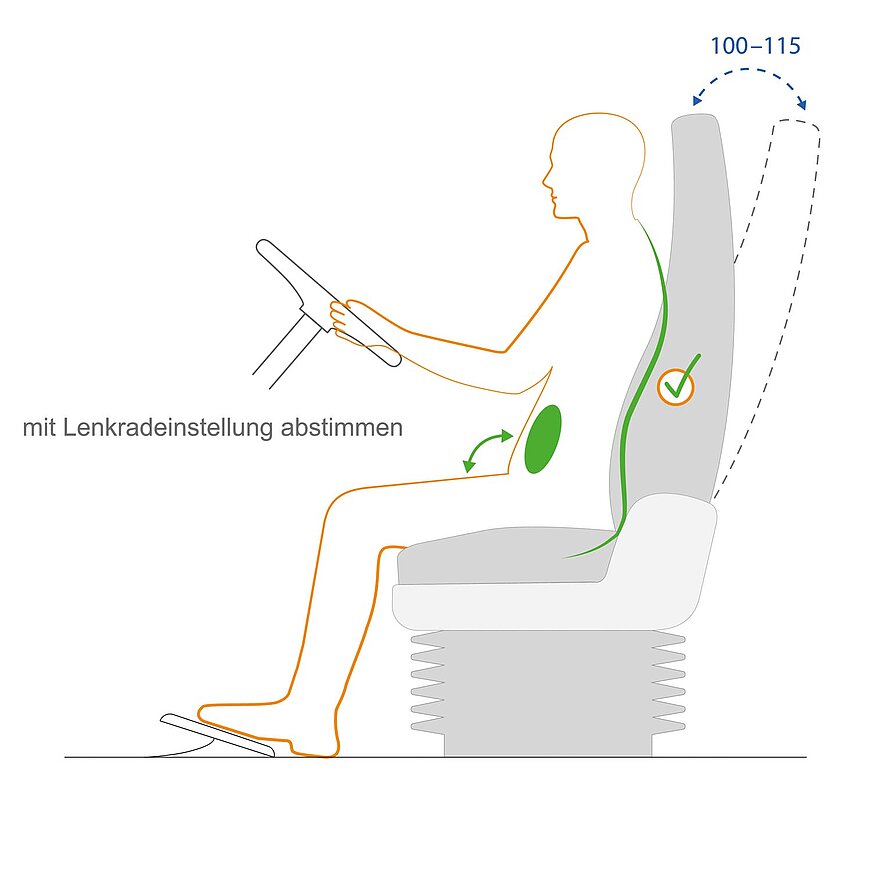
Backrest adjustment
- 100° up to 115°
- take an upright posture
- lean back fully
- do not squeeze abdomen
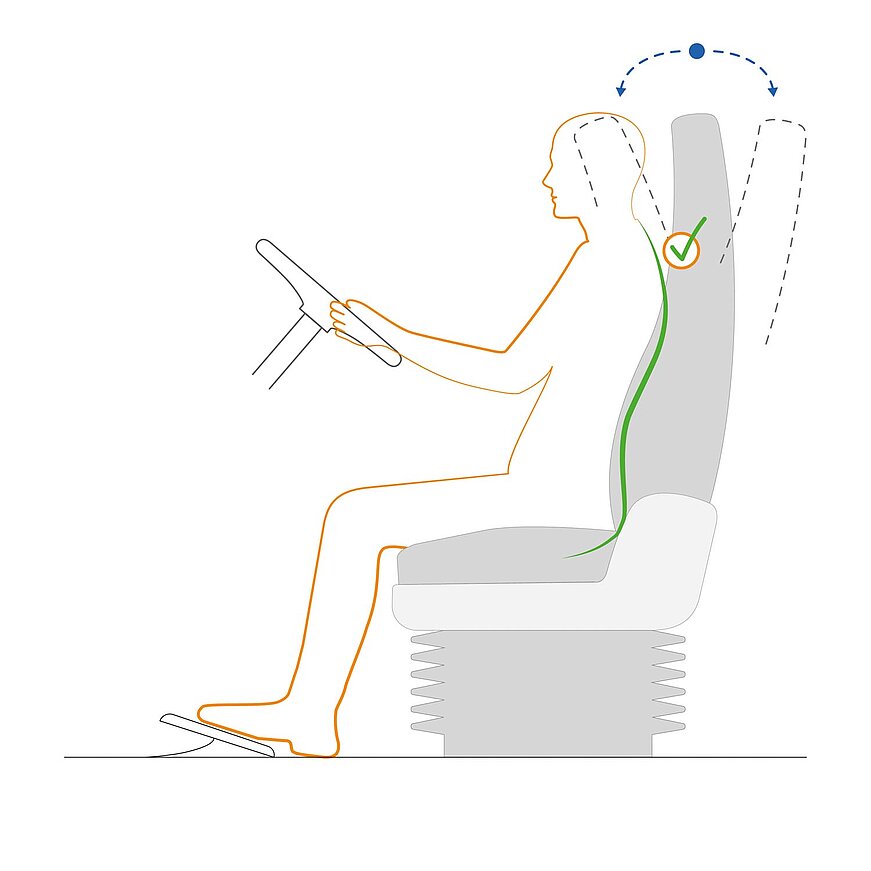
Shoulder adjustment
- shoulders should have full contact with backrest surface
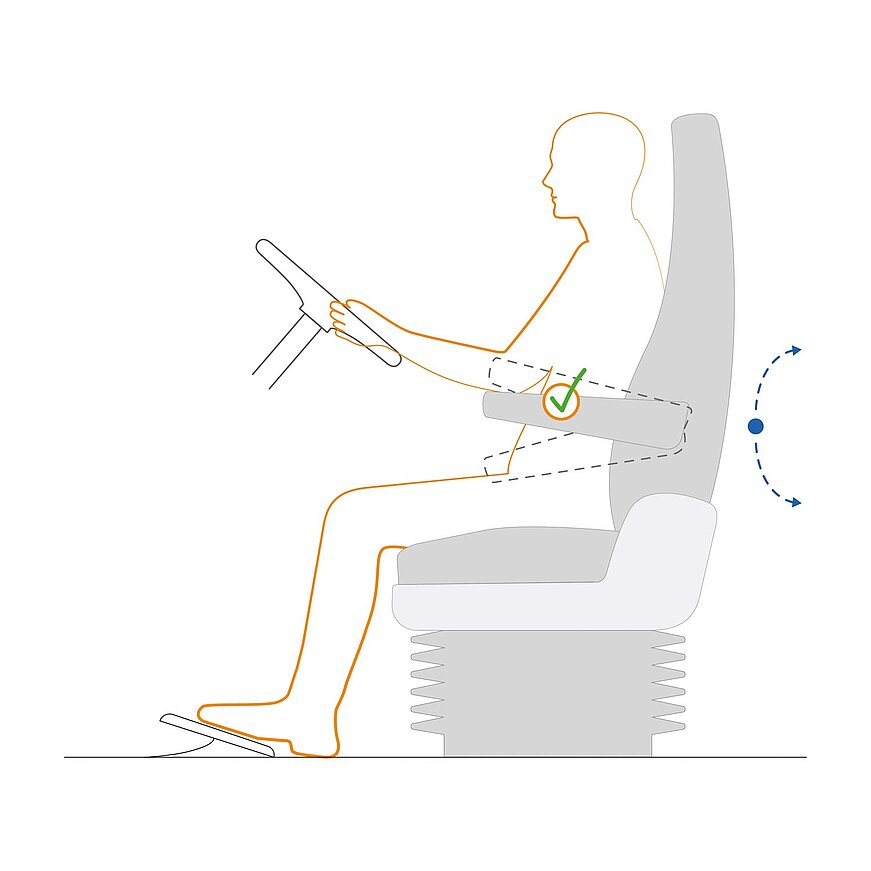
Armrests
- relieve back muscles
- elbows rest easily, hands are on steering wheel
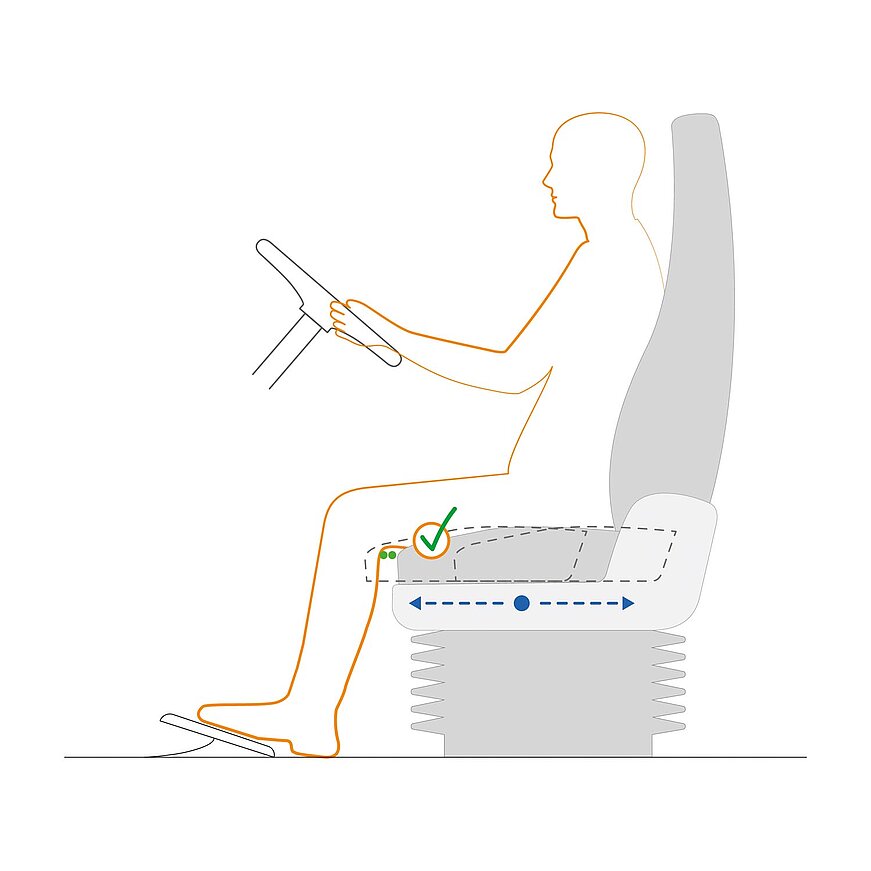
Seat cushion adjustment
- pull forward, thights should be supported as much as possible
- leave 2-3 fingerbreadth space between hollow of knee and front edge of seat cushion
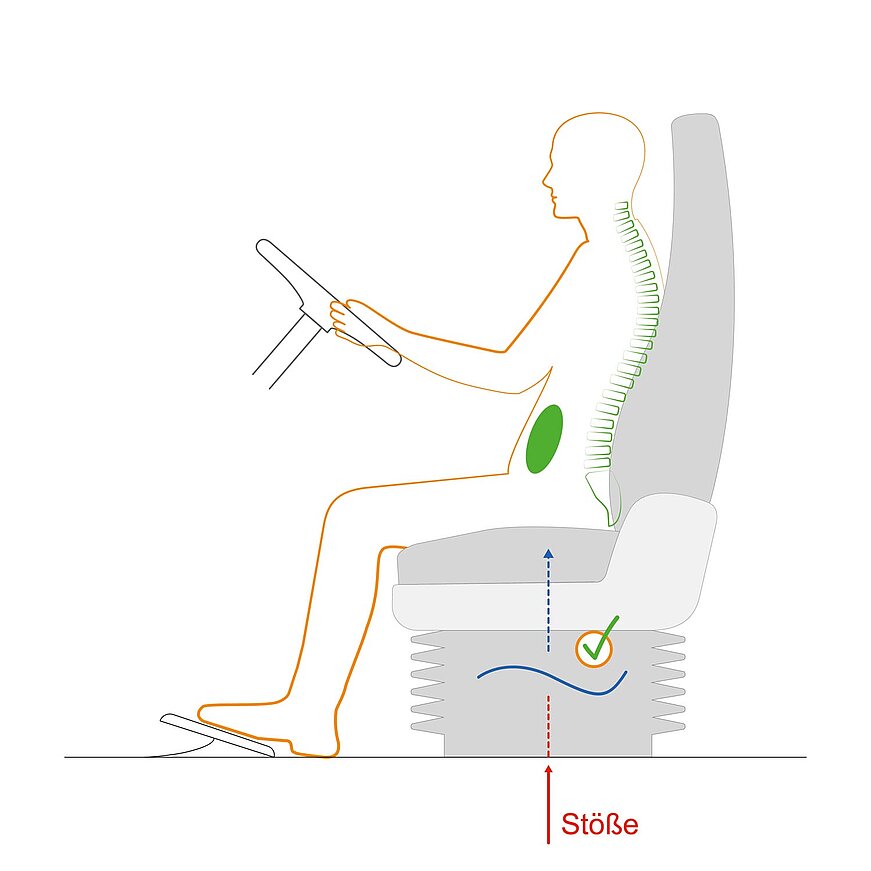
Shock absorber
- shock absorbing system
- adjustment depends on road condition; soft - flat roads / hard - bad roads
- feet have to be on pedals any time
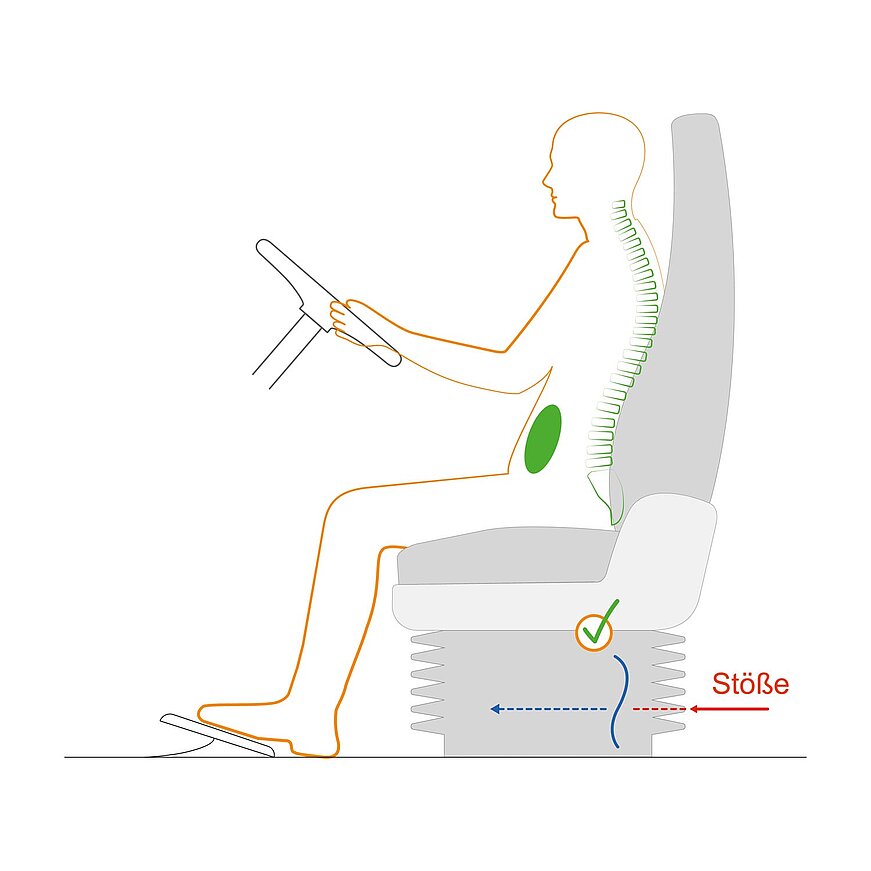
Horizontal suspension
- if needed unlock when transporting liquid loads or towing a trailer
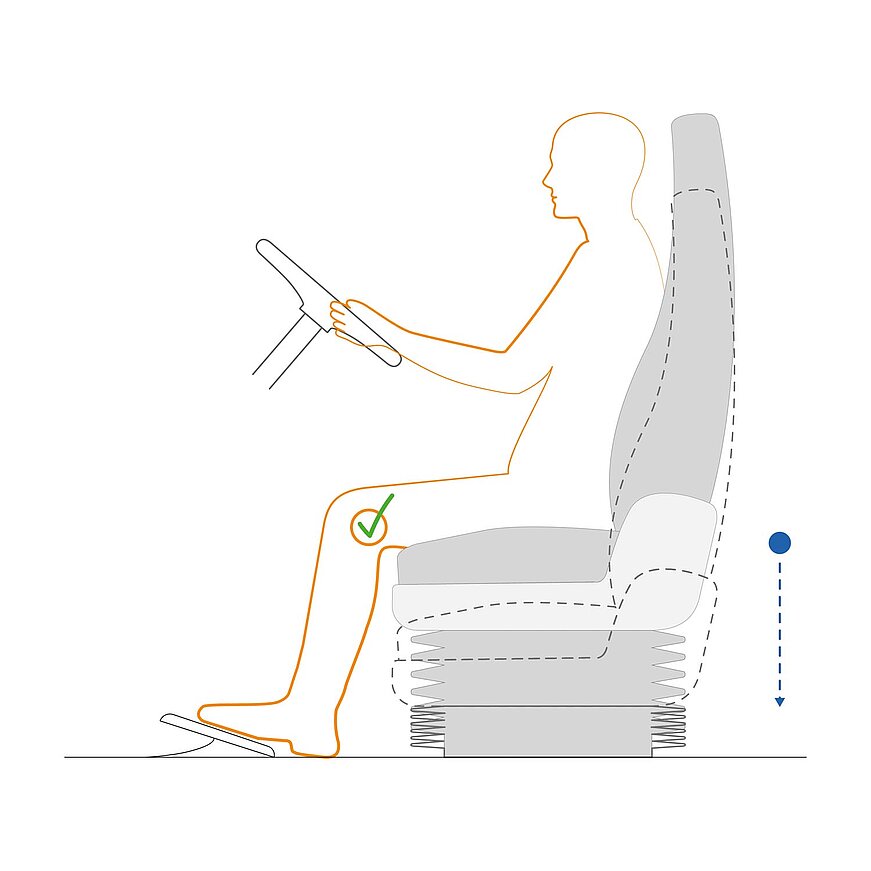
Quick Release
- easier entry and exit
- last height adjustment is saved
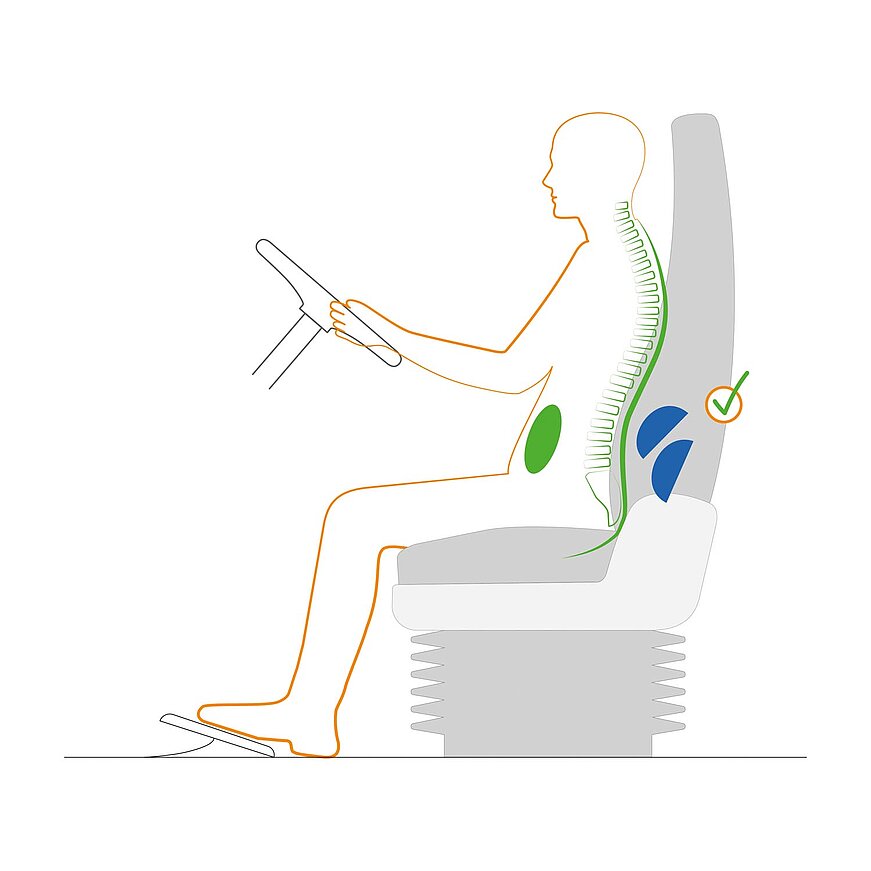
Lumbar support
- place pelvis at backrest
- inflate until support is sensible without pressure feeling
- spine is supported in its natural double S shape
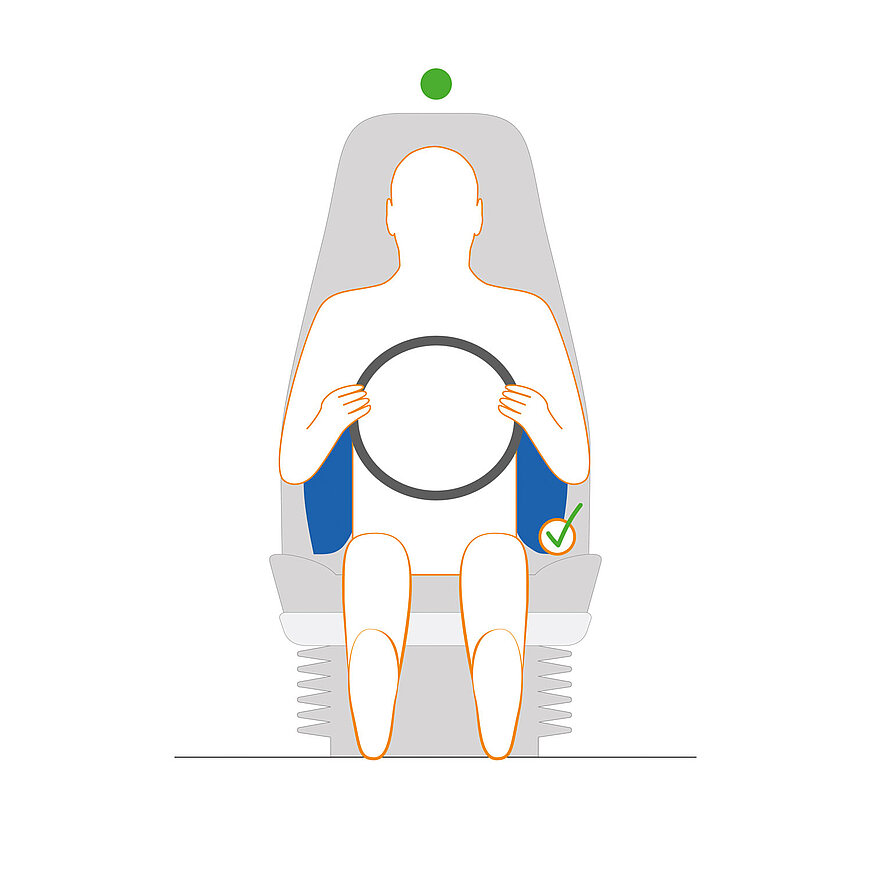
Site bolster support
- inflate until support of back is felt gently without pressure feeling
- back is supported sideways
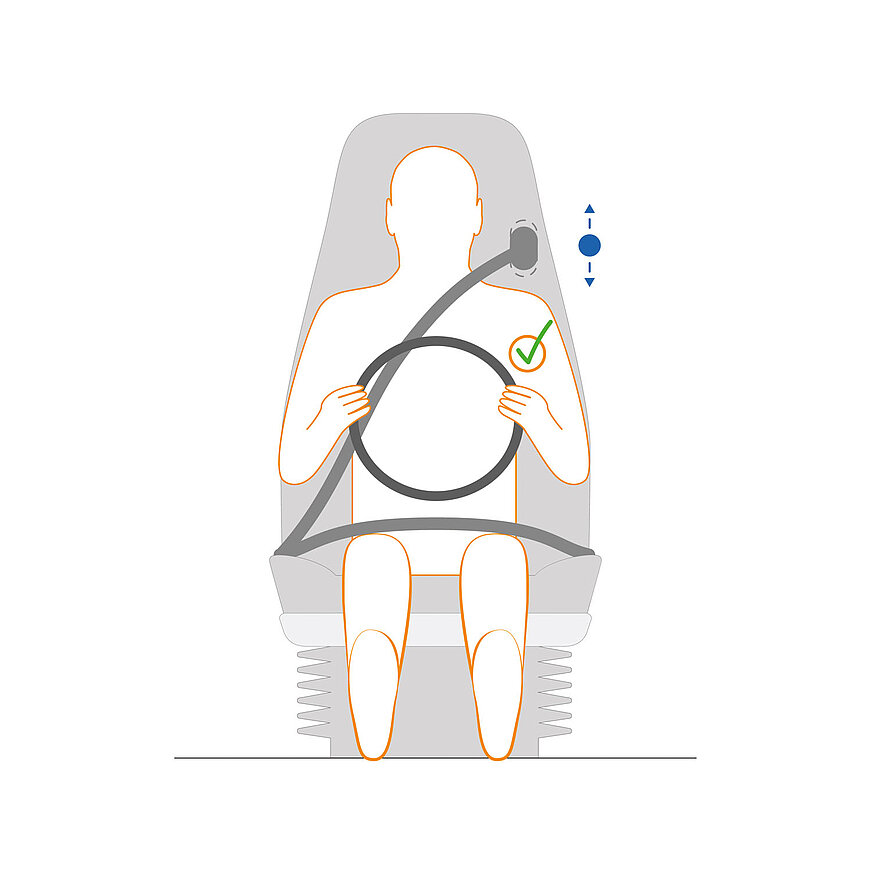
Belt height adjustment
- adjust individually to upper body length
- safety belt runs over the shoulder without cutting the neck
